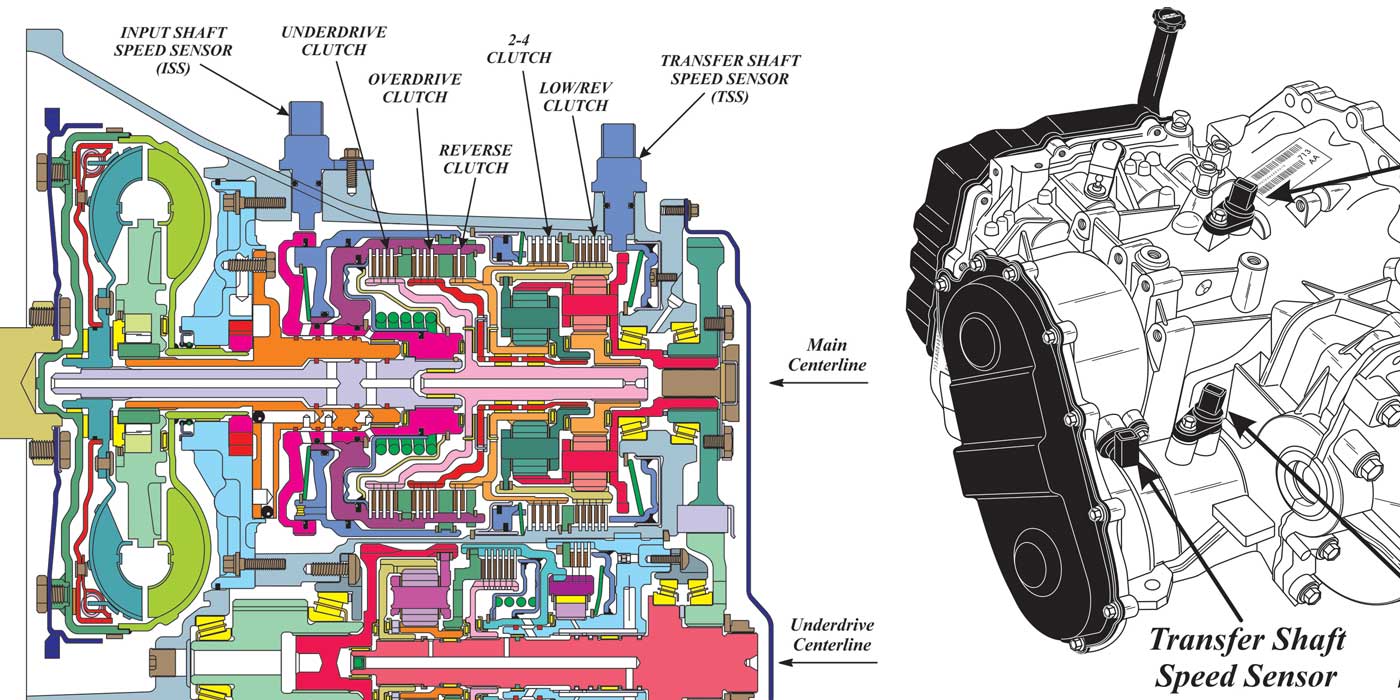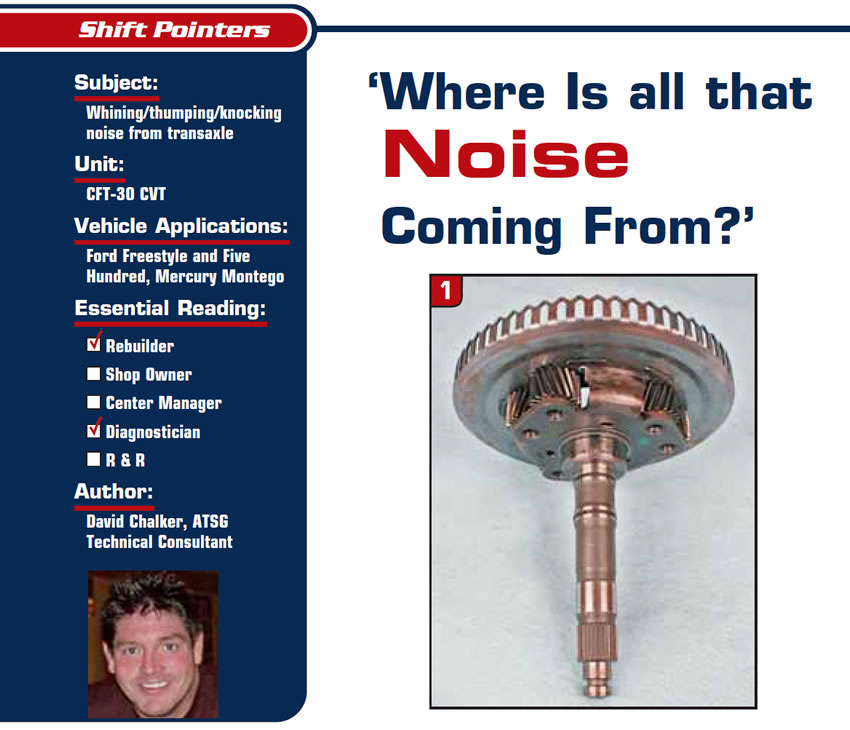
Shift Pointers
- Subject: Whining/thumping/knocking noise from transaxle
- Unit: CFT-30 CVT
- Vehicle Applications: Ford Freestyle and Five Hundred, Mercury Montego
- Essential Reading: Rebuilder, Diagnostician
- Author: David Chalker, ATSG, Technical Consultant
As I’ve gotten older, I have noticed, things that used to bother me when I was younger do not have the same effect on me. I was reminded of this as our oldest son, who is a U.S. Marine soon to be deployed, quite possibly to the Middle East, called my wife and me this past week. I overheard him on the phone as he interacted with his fellow buddy/brother soldiers, and they all seemed to be yelling at the top of their lungs at each other.
“Do you remember when the kids were little and we lived in that apartment while we built our home?” I asked my wife.
“OH, GOSH, YES!” my wife replied. “I remember being woken every weekend morning by all of the kids being, well, kids.” (My wife may have used the word “buttheads” instead of kids, but I can’t confirm that.)
We don’t have the same issues now, because of the six children we have together only three are still at home and they’re teenagers, which means they sleep all day during the weekend. Well, at least we hope they do.
This recent experience was brought to my mind as I spoke with a customer who told me of an issue he was having with a Ford Freestyle that seemed to be emitting an unrelenting noise similar to what I’d expect from our five boys and one girl (the “one girl,” by the way, is an “angel” and is never loud – HA!). The noise was unrelenting, not because it was loud but because it just wouldn’t stop.
This customer’s concern was about noise that sounded like a whining/thumping/knocking after the vehicle was started. The only time the noise would go away was when the selector was placed into the reverse or drive position. Then as the vehicle began to move, the noise returned. I began thinking; years ago, I really couldn’t relate to his problem, because every time my wife and I would be in our vehicle with the kids, you couldn’t turn the radio up loud enough to be able to hear it over the volume of the kids.
I went for a test drive with him to listen to his complaint, and as soon as he started the engine the sound was all too familiar. No, it didn’t sound like any of my children. It was something that I have become all too familiar with working in the transmission industry.
Input-bearing failure
The tech line at ATSG has received numerous calls concerning noises coming from Ford Freestyle and Five Hundred/Mercury Montego vehicles that use the CFT-30 CVT transaxle. These transmissions are suffering from bearing failures within the transaxle that can cause several different noises. For in-depth coverage of these issues, be certain to attend one of the upcoming 2009 ATSG seminars in your area. The noises are so common that Ford has produced a factory technical-service bulletin (TSB) to address the different issues. Ford TSB 06-11-4 pertains to “various noises from the CVT transaxle.”
- Condition #1: Vehicle may exhibit whining/thumping/knocking noise in park or neutral. Noise also may be apparent during driving
- Condition #2: Vehicle may exhibit a ticking noise on deceleration from about 20 mph (32 km/h) to a stop.
- Condition #3: Vehicle may exhibit a whining noise on deceleration.
Depending on which noise you are dealing with, refer to the appropriate condition and repair in this article.
Condition 1 verification
A whining/thumping/knocking noise in Park and Neutral or while driving may be caused by machining of the input shaft/front planetary carrier or flat spots on the input shaft/front planetary carrier’s roller bearing.
If noise is isolated to the transaxle area, monitor the turbine-shaft speed sensor (TSS_SRC) PID using an appropriate scan tool. In Park and Neutral, TSS_SRC should indicate engine speed in rpm. When the transaxle is placed into either Reverse or Drive, the TSS_SRC rpm should drop to 0. If the noise is eliminated as the rpm drops to 0, remove the transaxle and replace the input shaft/front planetary carrier or roller bearing as necessary. Refer to figures 1 through 3 for areas to inspect during service of the input shaft/planetary carrier. Figure 1 shows the input shaft/front planetary carrier, Figure 2 shows pitting marks where the roller bearing rides and Figure 3 shows a roller bearing that has failed.
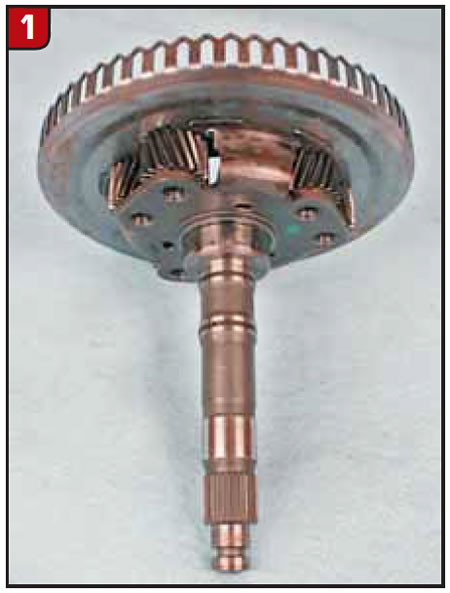
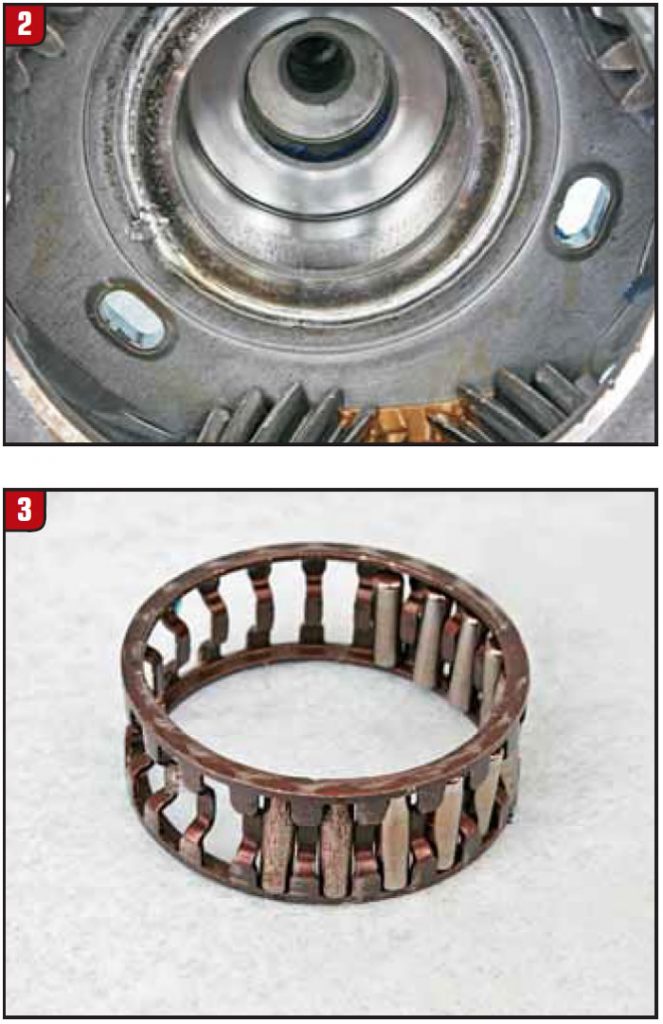
Condition 2 verification
A ticking noise on deceleration from about 20 mph (32 km/h) to a stop may be caused by the differential ring gear. On front-wheel-drive vehicles, if noise is isolated to the transaxle, replace the differential carrier assembly and bearings as necessary, referring to Figure 4, which shows the differential carrier assembly.
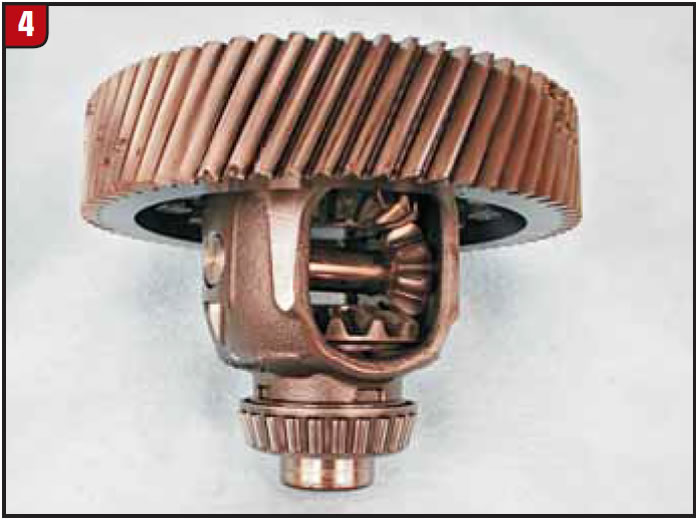
On all-wheel-drive vehicles it may be necessary to isolate the noise to either the AWD or CVT system.
To isolate the CVT system (referring to appropriate factory manual), remove the power transfer unit, reinstall the halfshafts, disconnect the differential electronic module and road-test the vehicle. If the noise is gone, the problem is in the AWD system. If the noise is still present, replace the differential carrier assembly and bearings as necessary.
Condition 3 verification
Gear whining noise during deceleration may be caused by the transfer-gear assembly.
Check for noise during the following driving conditions:
- Noise during deceleration from 42 to 35 mph (68 to 56 km/h), loudest around 37 mph (59 km/h).
- Noise during deceleration from 32 to 25 mph (51 to 40 km/h), loudest around 27 mph (43 km/h).
- Noise during deceleration from 16 to 11 mph (26 to 18 km/h), loudest around 15 mph (24 km/h).
- If the noise falls into one of the categories listed, replace the transfer-gear assembly as necessary. Refer to photos of the transfer-gear assembly in figures 5 and 6.
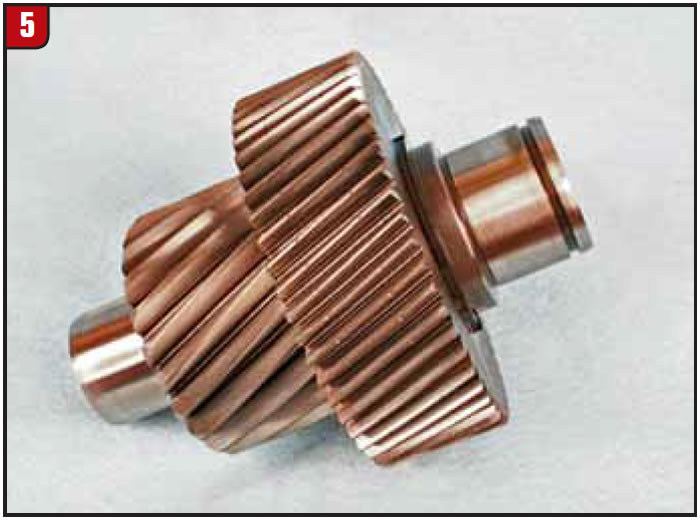
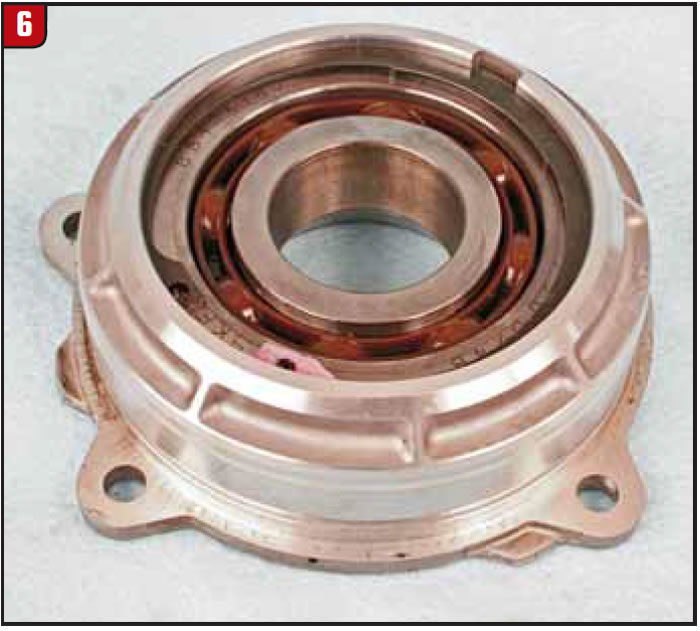
For more information concerning teardown and reassembly of this transaxle, refer to the appropriate factory manual or attend one of the upcoming 2009 ATSG seminars in your area.
Refer to the list of helpful Ford part numbers included to aid the technician in completing this repair.
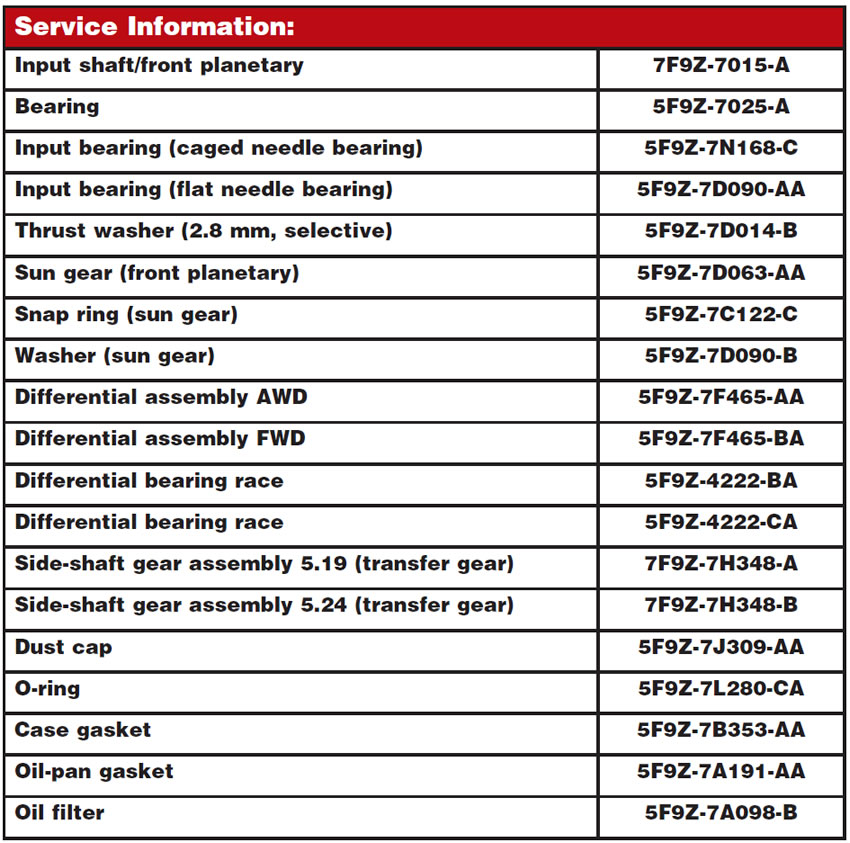
My hope is that this information will help you determine “where all the noise is coming from.”














